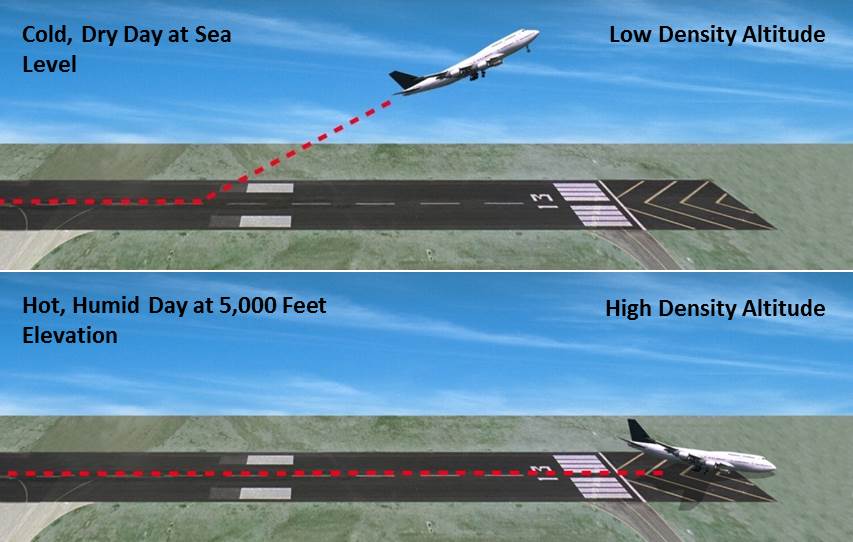

Altitude impacts engine performanceĪtmospheric pressure at sea level on average is about 14.7 pounds per square inch (psi), and this pressure is optimum for the engine. As a consequence, air at lower altitudes is more dense and at higher altitudes, less dense. At sea level, the atmospheric pressure is at its highest, and as you ascend in altitude you’ll experience lower and lower pressure.

The earth’s atmosphere is like a sea of gas, and the air at the top weighs down on the air at the bottom, creating pressure. With temperature, it’s the opposite: increased temperature results in decreased density. The two primary factors that affect density are temperature and pressure. In less dense air, the molecules are further apart and in the same volume, there are fewer molecules.

In dense air, the molecules-mostly oxygen and nitrogen-are tightly packed and there are more of them in a given volume of air.
#Density altitude free#
They’re free to move as forces are applied and fill volume as it’s available. In a gas like air, molecules are loosely packed and randomly arranged. A brief physics refresher The density of air varies Why is this? Because of differences in air density. The engine of our little R22 performs optimally and low altitude, and is less performant at high altitudes. (There are different techniques for getting more oxygen into the engine but we won’t get into those right now). Normally, the amount of fuel that flows into the engine doesn’t change, but what can and does change is the amount of available oxygen. Those are the two ingredients-air and fuel-and when the engine doesn’t get enough of either, then the amount of power that it’s able to produce diminishes. It takes in oxygen and liquid fuel and compresses and ignites them to produce power. The engine in the R22 works very much like the engine in your car. I’ll keep it simple here, but know that there is a lot more to DA than what follows. Now with this in mind, let’s talk about high density altitude.
#Density altitude full#
Simply put, the R22 is a great single person helicopter, but not necessarily the best for hauling around two full grown adults.Īn important point to note is that these numbers don’t change with altitude: If you are within weight and balance limitations at sea level, then you are within limitations at all altitudes. Any more than that and we would exceed the legal limitations. That means if we had a 240 lb person in the pilot’s seat and our fuel tanks were full, then the person in our passenger seat would have to weigh 94 lbs or less. Most of the time, the little R22 helicopter is what we call “power limited.” The seat weight limit in the R22 is 240 lbs. Many flight schools around the world use the R22, and it has been the most popular helicopter in flight training for more than 30 years. Due to its great design and low cost of operation, it’s become the go-to aircraft for helicopter flight training. It was not originally intended for flight training, but it’s been widely adopted for exactly that purpose. The R22 was designed in the 1970’s by Frank Robinson for the upper class earner to own a personal helicopter. This is a great little helicopter, but it’s not exactly what you’d call a “powerhouse” at any altitude. Most if not all of the training is done in the two-seat, R22 helicopter. So if you’re like I was, let me explain why learning in a high DA training environment is something you should take into serious consideration. It turned out that I just happened to pick a school where all my flying would be in high density altitude, and looking back on it I am so happy that I did.

Honestly, I didn’t really think about DA when I chose a school. I can tell you that it didn’t mean anything to me when I first started looking into flight schools.īack then, I had seen it mentioned here and there, and roughly understood that it was supposed to make you a better pilot, but I didn’t understand why, or what high density altitude actually meant. You may have heard about “flying in High DA” or “High Density Altitude”, but does that really mean anything to the aspiring helicopter pilot looking for the right training program? Guidance Aviation graduate and current employee Andrew Craw.


 0 kommentar(er)
0 kommentar(er)
